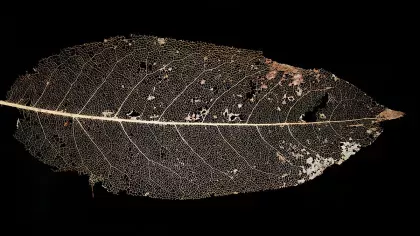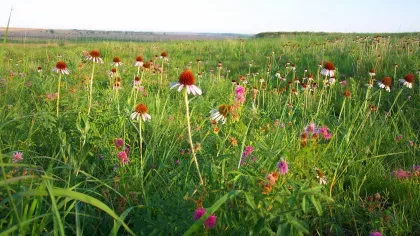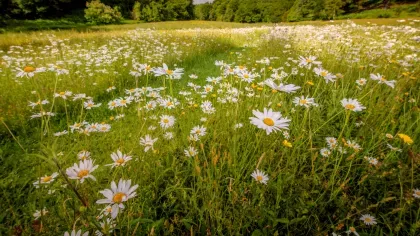2 June 2020
Sea of colour: Wakehurst’s meadows in bloom
Living Collections and Conservation Manager Iain Parkinson tells us about the magic of colour in Wakehurst's wildflower meadows.

Wakehurst is overflowing with bold, beautiful, and vibrant colours, and at this time of year, it’s the variety of tints and tones found in the meadows that really catch the eye.
Colour plays a major role in the fascination we have for wildflower meadows.
Calendar of colour
The changing colours of our meadows through the seasons grab your attention, whether it’s the kaleidoscopic shades of summer or the more muted tones of winter.
The pale lilac of lady’s smock is one of the first hues to appear, often seeking out the wetter parts of Hanging Meadow.
The delicate form of this pretty perennial belies its hardy nature – it’s certainly no shrinking violet.
But springtime is mostly the season of yellow shades – dandelions, buttercups and cowslips all rub shoulders together and for a fleeting moment Wakehurst dons a golden coat.
In early summer, mauves, pinks and tints of magenta start to appear in our Coronation Meadow and Bloomers Valley.
These pleasing pastels are the work of knapweed, betony and tufted vetch. They form extensive drifts that dominate the landscape to share a final explosion of colour before the meadow is cut for hay.

The most eye-catching hues
Some colours stand out more than most, such as grass vetchling. Although its flowers are small, the crimson pink petals certainly pack a punch.
The powder blue of the harebell is another stunner and always a welcome sight in the meadow, and of course the orchids provide a constant source of interest from the early purples to the common spotted.
These fairy-like flowers were once more prevalent in the meadows of the High Weald of Sussex.
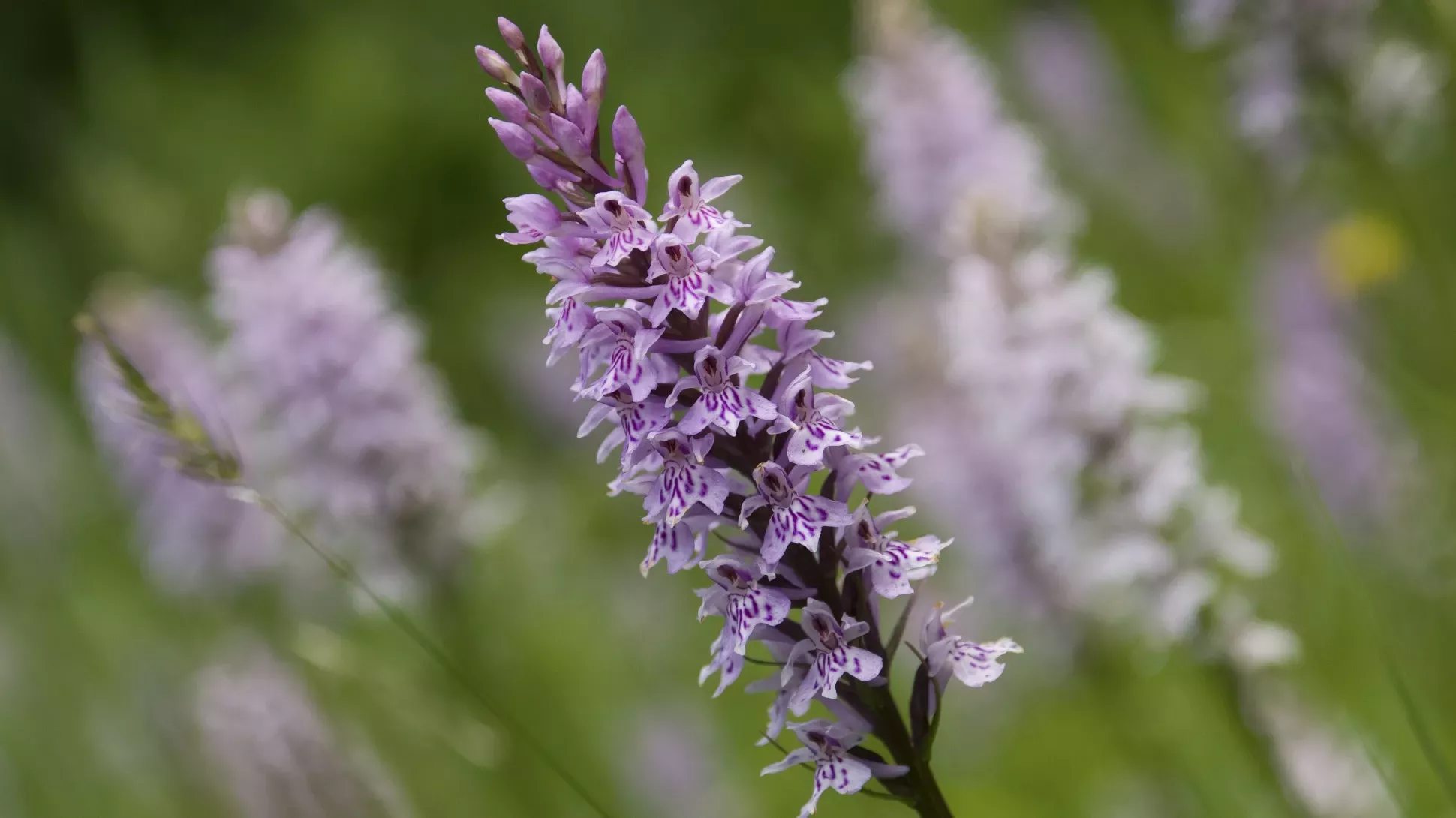


Myriad of meadow species
Some of the richest meadows at Wakehurst contain 40 species or more including many grasses from the delicate crested dog’s-tail to the highly scented sweet vernal-grass which gives hay its unique fragrance.
Mixed in amongst the variety of native grasses are the perennials. Many of these are quite common like the ubiquitous oxeye daisy or bird’s foot-trefoil, but they’re no less beautiful despite their abundant nature.
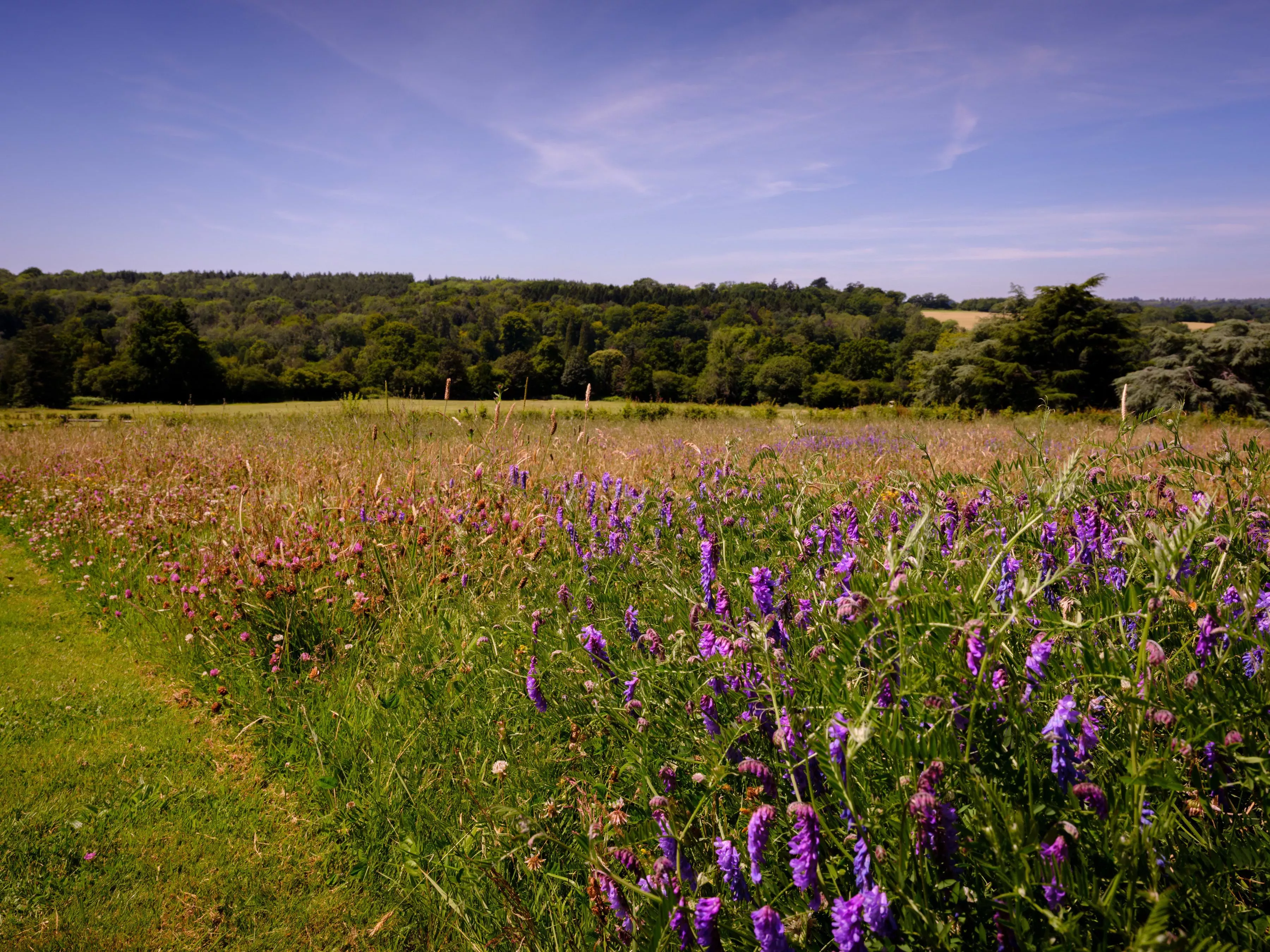
A threatened landscape
It’s no secret that meadows are vanishing from the landscape, largely as a result of the ploughing, reseeding and fertilisation that took place during post-war agricultural improvement.
With their demise, many wild plants that were once prevalent are also fading from sight.
Our meadows are now involved in a game of ecological push penny where wildflowers that were once ubiquitous are now scarce, where the scarce are becoming rare, and the rare have been shoved to the edge and are teetering on the brink.

Value of colour
There is so much more to a meadow than first meets the eye and to many the interest lies in their ecological, historical and cultural value.
But there is no shame in simply immersing yourself in their innate beauty.
Next time you walk through our Coronation Meadow at Wakehurst be sure to take a closer look – only then will it reveal its true colours.


